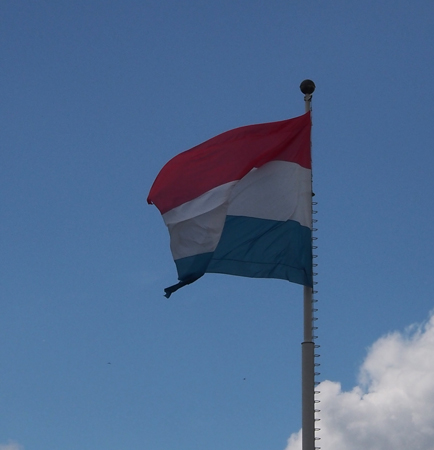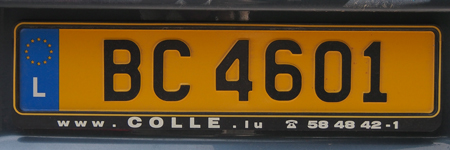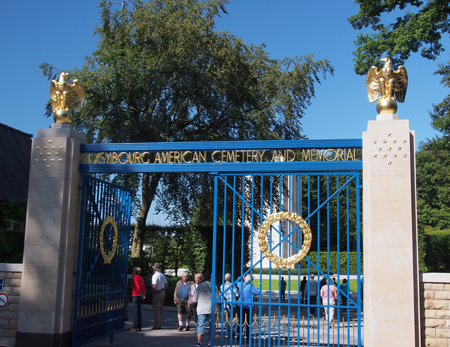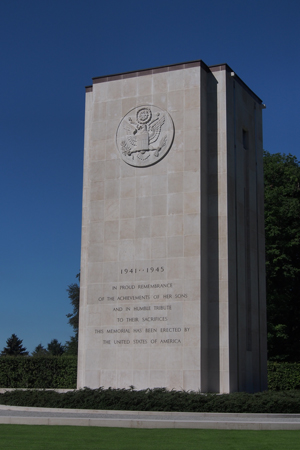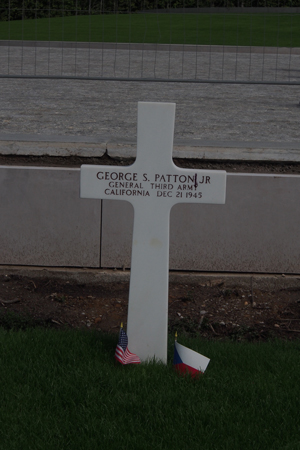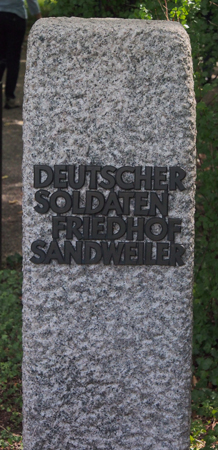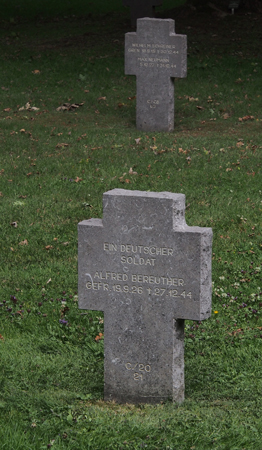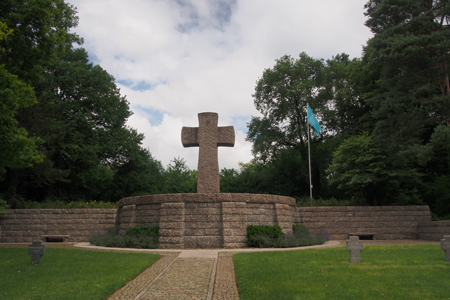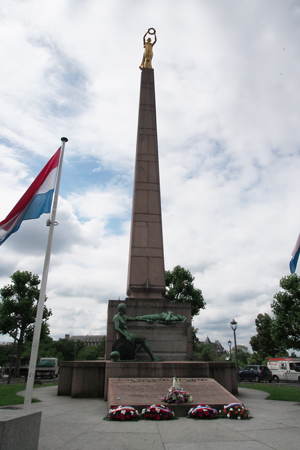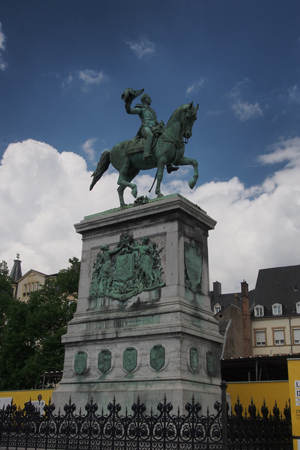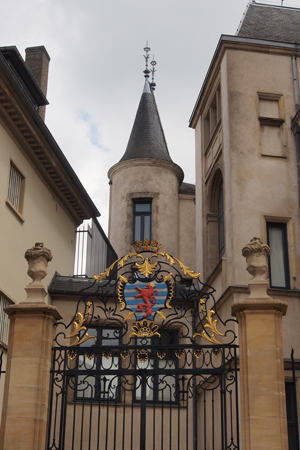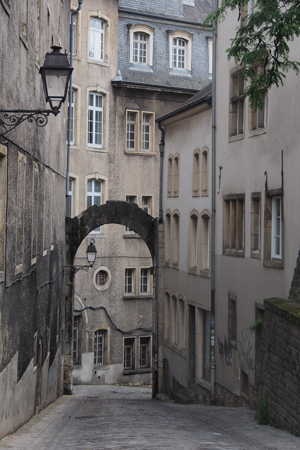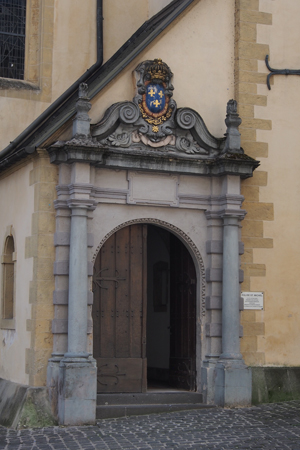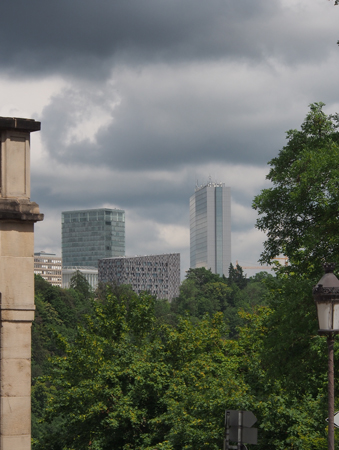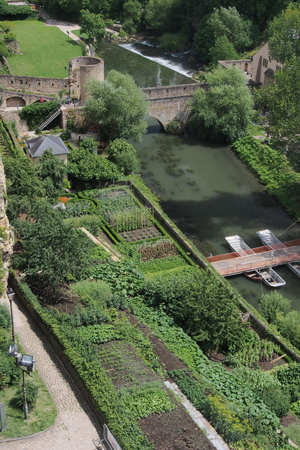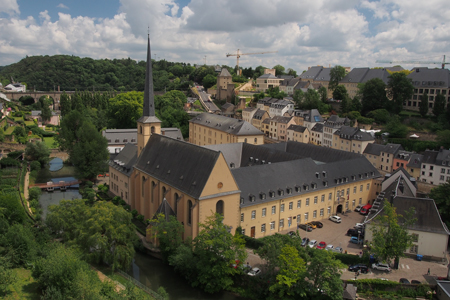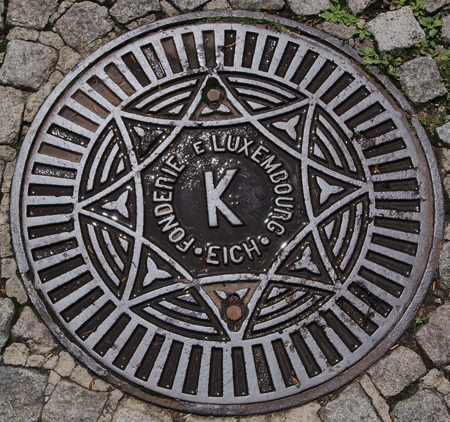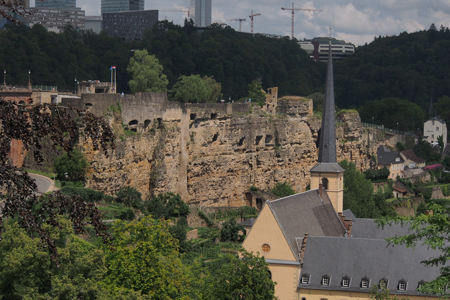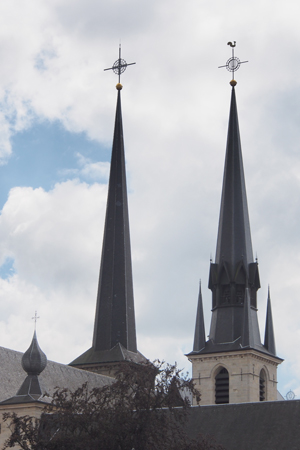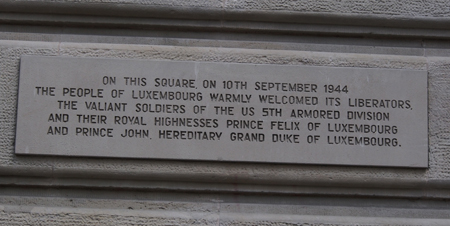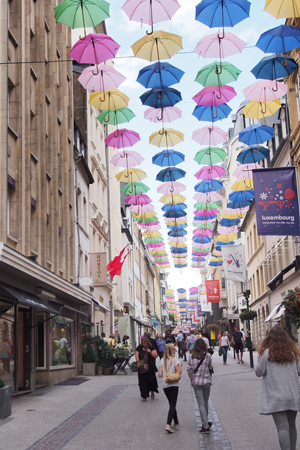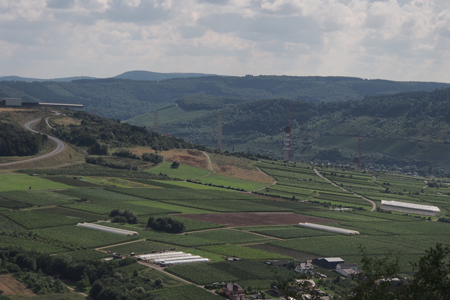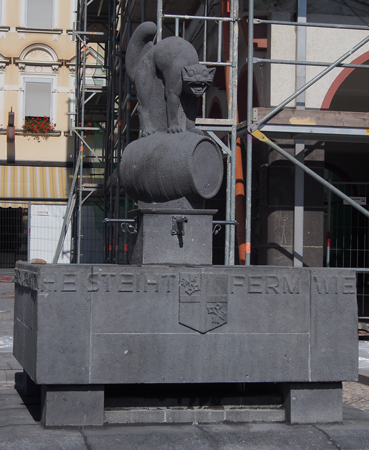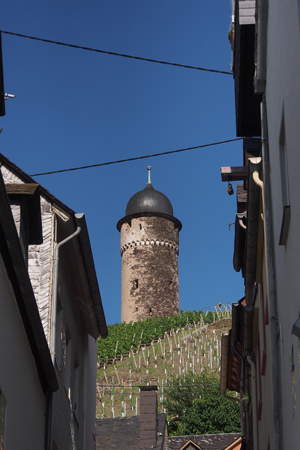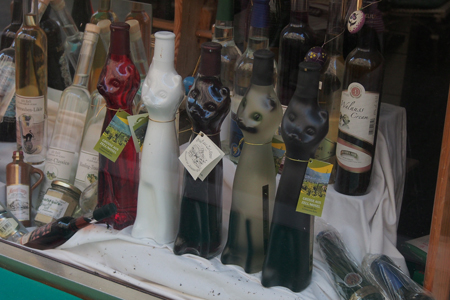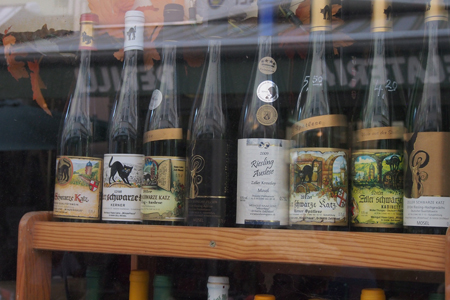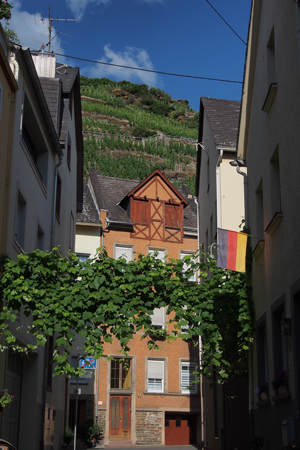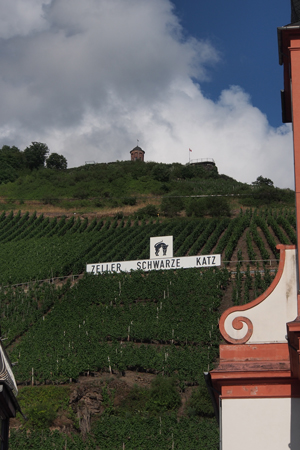Mon., 7/14/14 –Luxembourg and Zell
It did not rain today for our trip to Luxembourg. It has rained some everyday for the last week.
On our 1¾ hour bus ride from Zell on the Mosel, we were impressed with the high roadway bridges that spanned the valleys. We also went underneath several wildlife bridges that were wide paths of vegetation to keep deer and fox off the highways.
Luxembourg is half the size of Rhode Island – 70 x 42 miles. It has 450,000 people but many French, German, and Belgian people commute to work there. The cost of living in Luxembourg is quite high, but not as bad as Switzerland. The steel industry and banking are its main economic businesses. Luxembourg is ruled by a Grand Duke and has two legislative chambers.
Our first stop was at the American Cemetery where thousands of Americans killed at the Battle of the Bulge are buried. There were 87,000 casualties at the Battle of the Bulge. Only 100 remain unknown although efforts continue to identify the remains through DNA testing in Hawaii and researching who was with a particular army division and where they were fighting at a certain time.
The American cemetery has 52 acres that are impeccably maintained. The markers for the unknown state: “Here Rests in Honored Glory A Comrade in Arms Known But To God.” There are 22 sets of brothers at this cemetery and they are buried side by side. Other than that, rank and age are mixed in every row. General George Patton is buried at a single site separated from the other graves. He requested to be buried with his men in Europe.
Our guide was the superintendent of the cemetery and he gave us a lengthy, probably accurate, account of the fighting in the WWII European theater.
| Return to Top | Return to Itinerary | Return to Trips page to view other trips | Return to Dreamcatcher Home Page |
